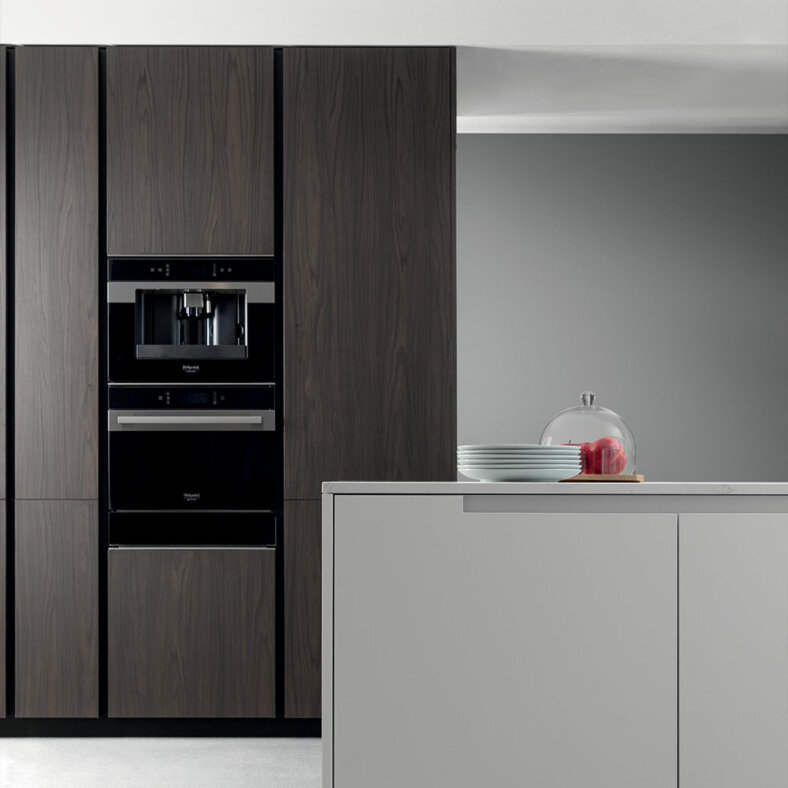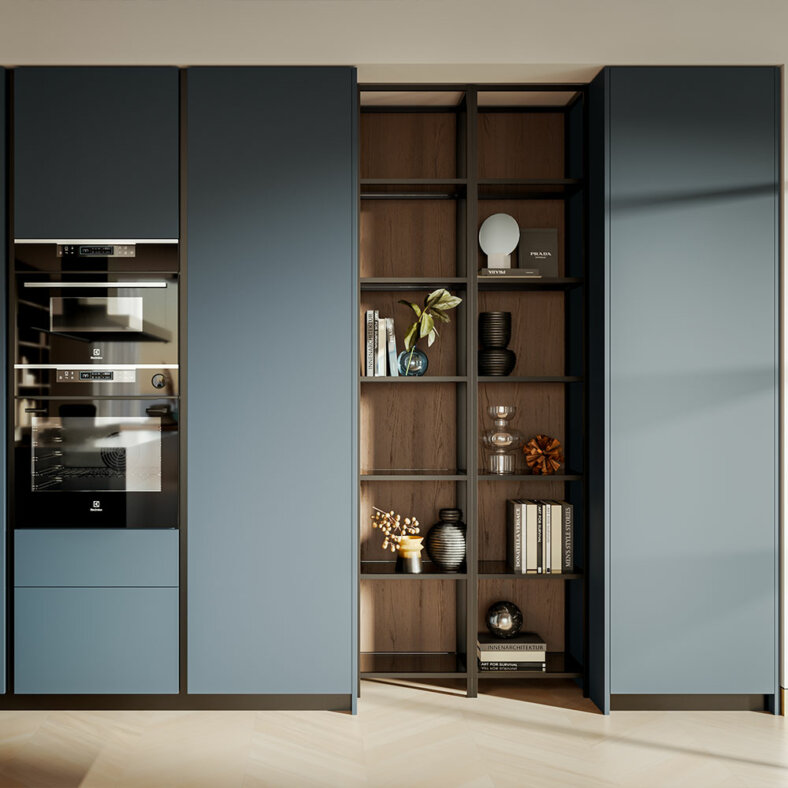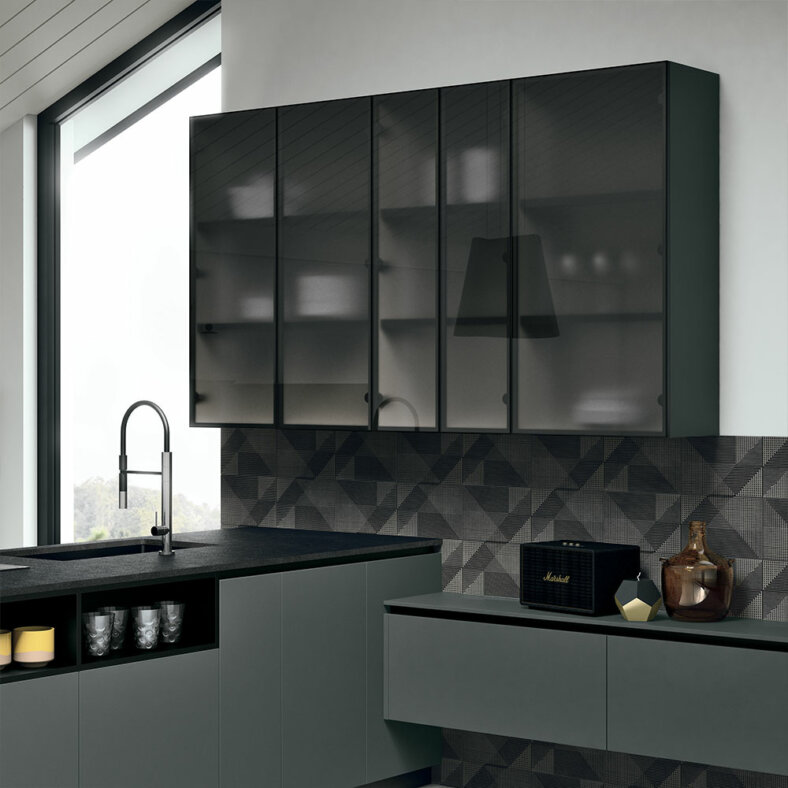Suggestions and guides
Materials for doors and carcasses
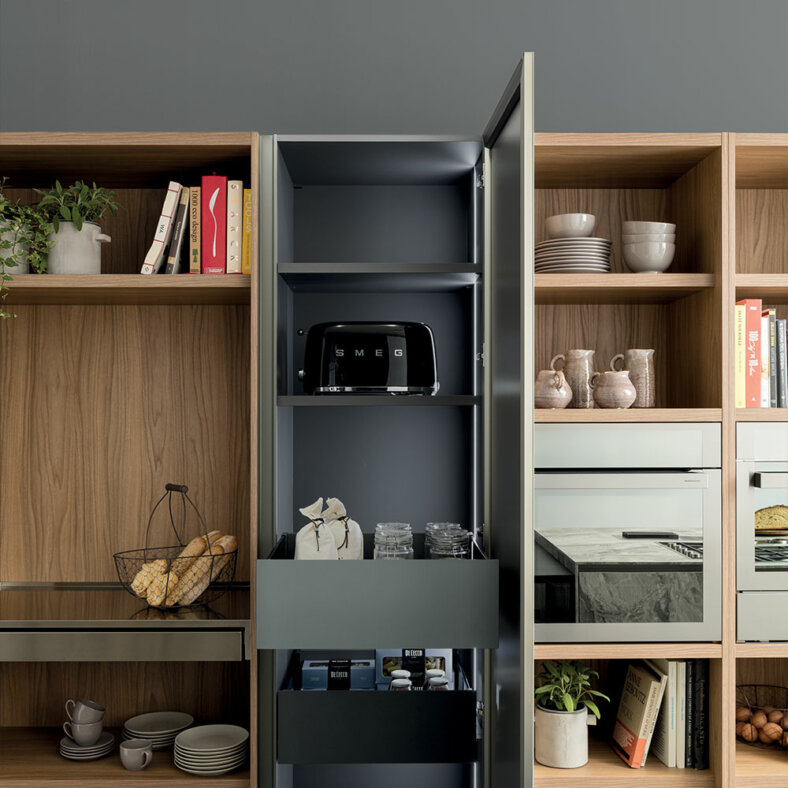
The importance of furniture interiors
Their structuring role makes it worthwhile learning a bit more about them. Here we offer a closer look at the choices made by Doimo Cucine.
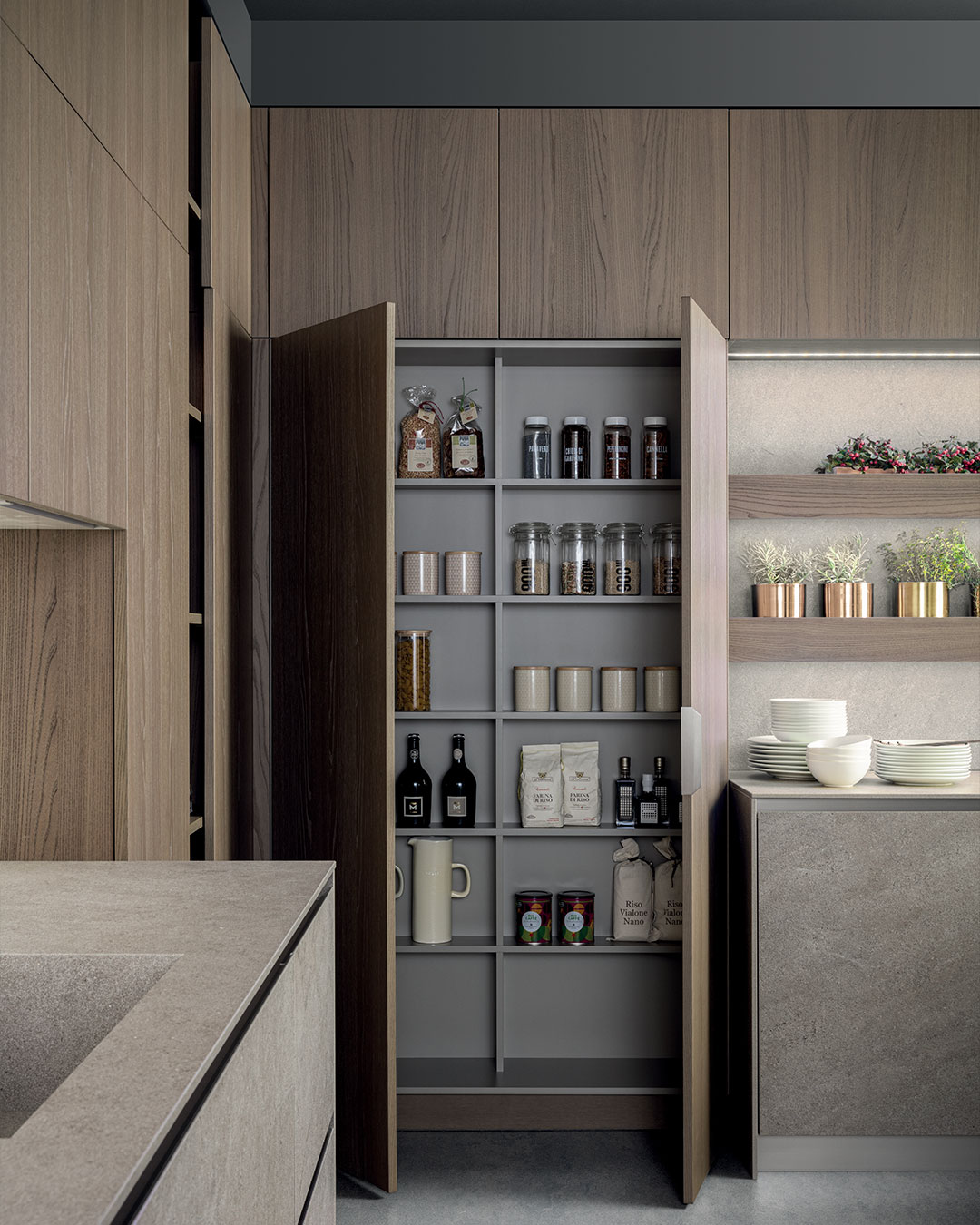
Ecological kitchen carcasses
Everyone wants a sturdy and long-lasting kitchen. Durability means choosing a model whose structural elements are made from water resistant panels of a suitable thickness. This makes for solid carcasses that resist attacks by water vapour and eventual infiltrations of liquids, two common hazards in this part of the house. The IdroLEB panels used by Doimo Cucine for its carcasses, for example, in addition to being resistant to water, are also ecological, FSC® certified 100% recycled wood, because they are made from 100% post-consumer wood. No trees are therefore cut down for their production.
The backs of our cabinets, instead, are realised in high density fibreboard and respect European regulations and the American CARB TSCA standard for formaldehyde emissions: they reach the highest possible level for this component.
For a better understanding: the Forest Stewardship Council is an international non profit NGO that has created an internationally recognised forestry certification system. Four Stars, instead, is a Japanese system, followed by Doimo Cucine since 2008, because it is very severe and more restrictive than its European counterparts, and thus an additional guarantee for the environment and health. It classifies wood based panels in four emissions classes, from F* to F****. Our carcasses meet the highest levels, as defined by the standard F**** (or Four Stars).
Studies conducted by leading research laboratories demonstrate that the formaldehyde emissions of the panel utilised by Doimo Cucine are 70% lower that European norms and approximately 40% less than the prescriptions of the already restrictive CARB TSCA American standard. Less emissions means more safety for our clients.
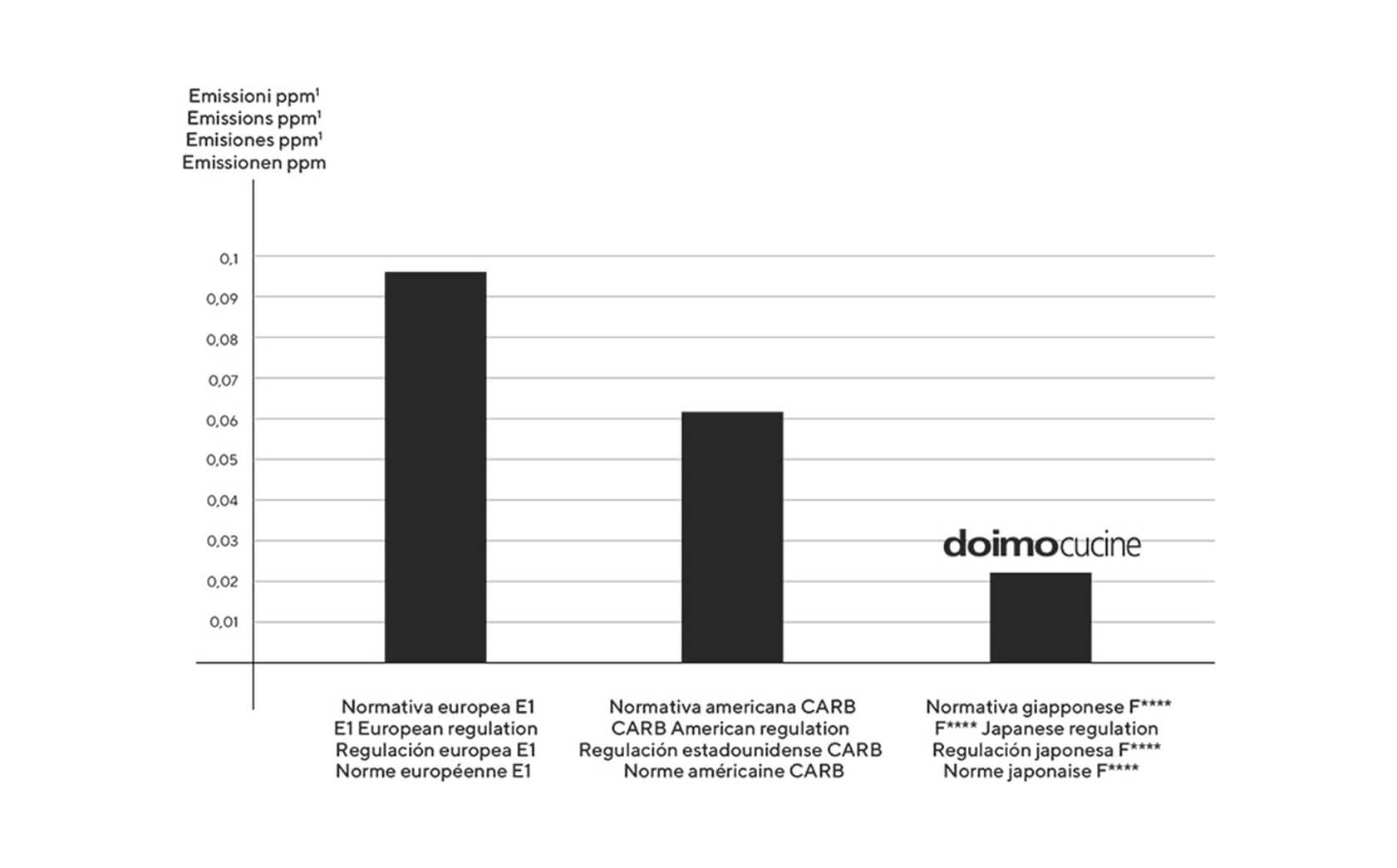
How to choose quality kitchen fronts
When choosing a kitchen, assessing the panels used for its fronts speaks volumes about the quality of the overall product. This consideration is extended to parts that are not visible, because these panels are finished in a range of different materials, from wood to Tecnolam, to lacquers, etc., responsible, in other words, for the appearance of each single collection. Naturally, this depends on the type of model, the finishing material and, of course, the manufacturer.
In general terms, the best materials for fronts and cabinet doors designed to be finished with other materials is chipboard, made from rough wood chips, or MDF, medium density fibreboard soaked in resin. These panels are also often used for shelves, back panels and end panels, which are then clad in the finishing material selected for each kitchen. The evaluation of the internal panels moves hand in hand with the evaluation of external materials.
How to choose quality kitchen work tops
Worktops are key to the functionality and durability of a kitchen. This is why they should be carefully evaluated both inside and out. In addition to the advantages and disadvantages of different worktop materials, it is essential to collect information also about the base panels to which they are applied. Excluding tops in marble, ceramic, stone and quartz-derivatives such as Okite® and Silestone® and ceramic materials, all other materials are applied to a core. For example, Doimo Cucine uses panels in chipboard, a classical mix of wood particles, in HPL, formed of cellulose fibres and resin, or compact and hard wearing poplar blockboard. These same panels are also often used for matching splashes.
How to choose durable shelves
Evaluating the durability of kitchen shelves used inside cabinets or mounted on the wall, means considering finish materials and their base panels. For freely mounted shelves, we can consider the same considerations made for cabinet fronts. For cabinetry shelving it is important to consider the same characteristics used to evaluate the carcasses. All usually all the manufacturers offer shelves in the same finishes proposed for cabinet fronts and doors, together with additional options. Doimo Cucine, for example, offers cabinet shelves in chrome plated finishes and tempered glass, some with aluminium frames, as well as shelves in stainless steel.

